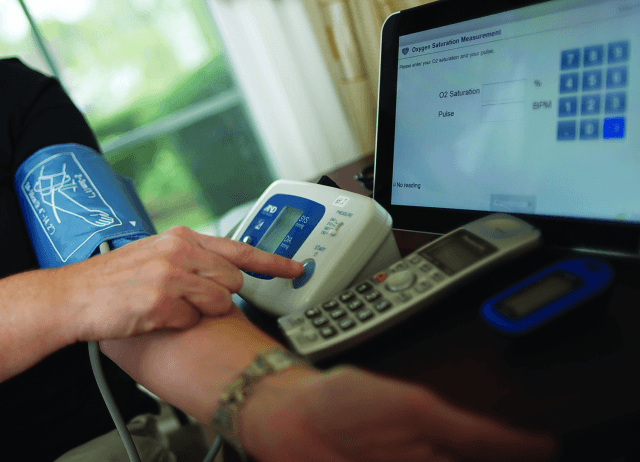A frail 70-year-old patient with chronic obstructive pulmonary disease (COPD) carefully gets out of bed every morning and checks his vital signs, answers questions on a computer tablet about how he’s feeling and sends off the results electronically to a registered nurse (RN).
The patient is a resident at LOFT Bradford House, which is part of a supportive housing network that provides services to older adults and seniors with complex medical issues, including mental health and cognitive challenges. He has increasingly been taking charge of his own care with the help of Telehomecare, a remote home monitoring and self-management coaching initiative for patients with COPD and congestive heart failure.
“Most people are very engaged and interested in learning more about their own health conditions and being able to manage what they can,” says Dr. Norma Carter, a family physician who provides care to LOFT residents. “For staff and patients, Telehomecare is really getting patients to engage in self-care.”
Telehomecare has recently been introduced in a number of new settings, in addition to being widely available in the home, including assisted living, supportive housing, and retirement homes.
Touchscreen technology
Patients are provided with easy-to-use touchscreen technology and a blood pressure cuff, pulse oximeter and weight scale, as well as lots of training. They send their vitals daily during the weekdays for monitoring by specially trained RNs who review the results daily and contact patients if there’s a change in their health that needs further investigation. As well, the nurses connect with patients every week by phone to help with the skills and confidence needed to manage symptoms, medications, and lifestyle behaviours at home.
Telehomecare is a program of the Ontario Telemedicine Network (OTN) funded by the Government of Ontario and Canada Health Infoway. There’s no cost to patients or healthcare providers. The program is delivered in 10 Local Health Integration Networks in Ontario via Community Care Access Centres and hospitals.
Physicians can receive regular Telehomecare progress reports about their patients, something Dr. Carter says really helps to inform care. Plus, “patients know what to watch for and now we have more productive conversations. They understand why I’m asking questions about their breathing.”
Dr. Carter says it’s also more comfortable for patients to receive care at home, wherever that may be. Plus, data indicates that Telehomecare helps to reduce ER visits and hospital admissions by 50 per cent.
To learn more about Telehomecare, please visit www.ontariotelehomecare.ca or call 1.855.991.8191. – NewsCanada
